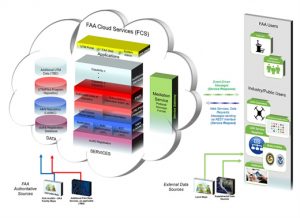By Jenny Beechener
“I’m looking for something I can field sooner rather than later, and I am not going to wait for the perfect solution,” said Andy Thurling, Northeast UAS Airspace Integration Research (NUAIR) Chief Technology Officer. “I want to stand up safe and effective local BVLOS operations, and these bubbles will grow into an ecosystem.” NUAIR is working with industries including inspection, monitoring and precision agriculture to achieve this.
The Federal Aviation Administration (FAA) selected two test sites – Virginia Tech Mid-Atlantic Aviation Partnership and Griffiss International Airport – for the second phase of the Unmanned Aircraft System (UAS) Traffic Management Pilot Program (UPP) in April 2020. The pilot programme is helping to define an initial set of industry and FAA capabilities required to support Unmanned Traffic Management (UTM) operations. Participants shared key findings at the ATCA Annual UPP panel that took place on 9 December 2020.
“We’ve moved from a government-mandated architecture from NASA to an industry-standard based architecture,” said Mark Blanks Virginia Mid-Atlantic Aviation Partnership Program Lead. “We are driven more and more by industry in the way we inform ASTM and other standards bodies in design and implementation, making the standards more robust.” Mark Blanks said the FAA’s successor programme BEYOND will serve to mitigate more risk as a result of this increased participation.
From an operator perspective, AirXOS Chief Technologist Ted Lester said the pilot programme demonstrates UTM development is on the right track. “We proved during UPP2 there are no major issues with its implementation. For example, the federated architecture works and is being adopted around the world.” Publication of UTM version one is key to getting operations started and improving on the operational concepts in the future.
This was echoed by Head of UTM for Wing, Reinaldo Negron, who said UPP is helping to inform the world, for example Switzerland’s launch of remote ID capability, and incorporation of strategic deconfliction in European U-space regulations. Reinaldo Negron and Ted Lester are among industry representatives helping to draw up a White Paper in partnership with the FAA and NASA examining at security aspects of UTM. “Some recommendations will be included in the ASTM draft UTM standards when the first version is published, so a lot of these security aspects will be taken care of,” explained Ted Lester.

“It is important to look at security risk across the whole ecosystem, not just UTM,” added Andy Thurling. “The operators don’t need a fully integrated security system, but they need a basic level of cyber security as they present the weakest link.”
FAA UAS Integration Officer, Jarrett Larrow, said the UTM implementation plan is in draft form and under review internally within the agency. “Tasked by Congress, the FAA is developing safety performance requirements for the standards needed for UTM services, security concerns, appropriate oversight mechanisms, and the interface with air traffic services. We aim to get that out over the next calendar year, together with updated ConOps in partnership with NextGen.” Industry participants welcomed the move closer to operations.
“A lot of people in aviation don’t appreciate the level of capability that is being built out with UTM, or really comprehend what we are bringing to the table,” said Jarrett Larrow. “Once they see it, the safety benefits and added value, they will start to appreciate it, and it [UTM] will start to move faster.”
For more information visit:
US Air Traffic Control Association (ATCA) Annual 7-10 December 2020 online event, visit: https://www.atca.org/annual




